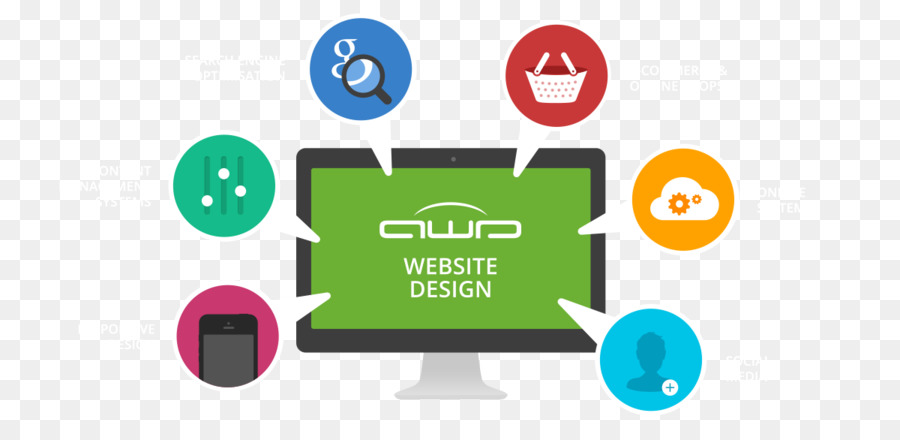Interested In Discovering Exactly How Website Style Has Advanced Over The Years? Check Out The Journey From Basic, Straightforward Layouts To User-Centric User Interfaces That Prioritize The Visitor'S Experience
Interested In Discovering Exactly How Website Style Has Advanced Over The Years? Check Out The Journey From Basic, Straightforward Layouts To User-Centric User Interfaces That Prioritize The Visitor'S Experience
Blog Article
Content Writer-Monroe Singer
In the past, web sites were simple and focused on information. Navigation was direct, and design was for desktops. Currently, user experience is essential. Information overviews layouts for easy navigation. Responsive designs match different tools. https://hectorsoicx.bleepblogs.com/30373317/boost-your-digital-impact-with-innovative-website-design-solutions , dark setting minimizes strain, and minimalist food selections boost navigation. Interactive attributes involve individuals, and bold visuals attract attention. AI integration improves engagement. See just how style has advanced to boost your on-line journey.
Early Days of Website Design
In the very early days of web design, simplicity preponderated. Web sites were fundamental, with restricted shades, typefaces, and designs. The focus was on giving info rather than fancy visuals. Users accessed the net via slow dial-up connections, so speed and performance were crucial.
Navigation food selections were straightforward, typically located on top or side of the page. Websites were developed for home computer, as mobile browsing had not been yet common. Content was king, and designers prioritized very easy readability over intricate style components.
HTML was the primary coding language made use of, and designers needed to function within its restrictions. Computer animations and interactive attributes were marginal compared to today's criteria. Sites were static, with little vibrant material or personalized user experiences.
Surge of User-Focused Style
With the evolution of website style, a shift in the direction of user-focused design concepts has become significantly famous. Today, developing internet sites that prioritize customer experience is critical for engaging site visitors and attaining organization objectives. User-focused style entails understanding the requirements, choices, and behaviors of your target audience to tailor the site's design, material, and includes as necessary.
Developers currently carry out thorough research, such as individual studies and functionality testing, to collect understandings and comments directly from customers. This data-driven technique aids in creating intuitive navigation, clear calls-to-action, and visually appealing interfaces that reverberate with visitors. By positioning the customer at the center of the style procedure, websites can provide a more personalized and satisfying experience.
Receptive layout has actually also emerged as an essential facet of user-focused layout, making sure that internet sites are optimized for different devices and screen sizes. This flexibility improves access and usability, satisfying the diverse methods individuals communicate with sites today. Essentially, the surge of user-focused design represents a change in the direction of developing electronic experiences that prioritize the demands and assumptions of the end individual.
Modern Trends in Web Design
Discover the latest trends shaping web design today. One famous trend is dark mode style, offering a sleek and contemporary look while minimizing eye stress in low-light settings. One more vital trend is minimal navigation, streamlining menus and enhancing customer experience by focusing on essential elements. Integrating micro-interactions, such as animated buttons or scrolling effects, can produce a more appealing and interactive web site. accessible website design remains critical, ensuring smooth customer experiences throughout various gadgets. In addition, utilizing strong typography and unbalanced layouts can include visual rate of interest and accentuate specific content.
Integrating AI innovation, like chatbots for customer assistance or tailored referrals, boosts customer engagement and enhances procedures. Access has also come to be a significant fad, with developers prioritizing inclusive style techniques to deal with diverse individual demands. Embracing sustainability by maximizing web site efficiency for speed and efficiency is another emerging pattern in web design. Teaming up with customer responses and information analytics to iterate and enhance layout continually is essential for remaining pertinent in the ever-evolving digital landscape. By accepting these modern-day trends, you can create an aesthetically appealing, straightforward website that reverberates with your audience.
Verdict
As you reflect on the evolution of internet site design from the very early days to now, you can see how user-focused style has actually come to be the driving pressure behind modern-day patterns.
Embrace the journey of change and adjustment in web design, constantly maintaining the user experience at the leading edge.
Stay current with the most up to date patterns and innovations, and never ever quit evolving your strategy to develop visually sensational and straightforward web sites.
Progress, adapt, and create - the future of web design is in your hands.
